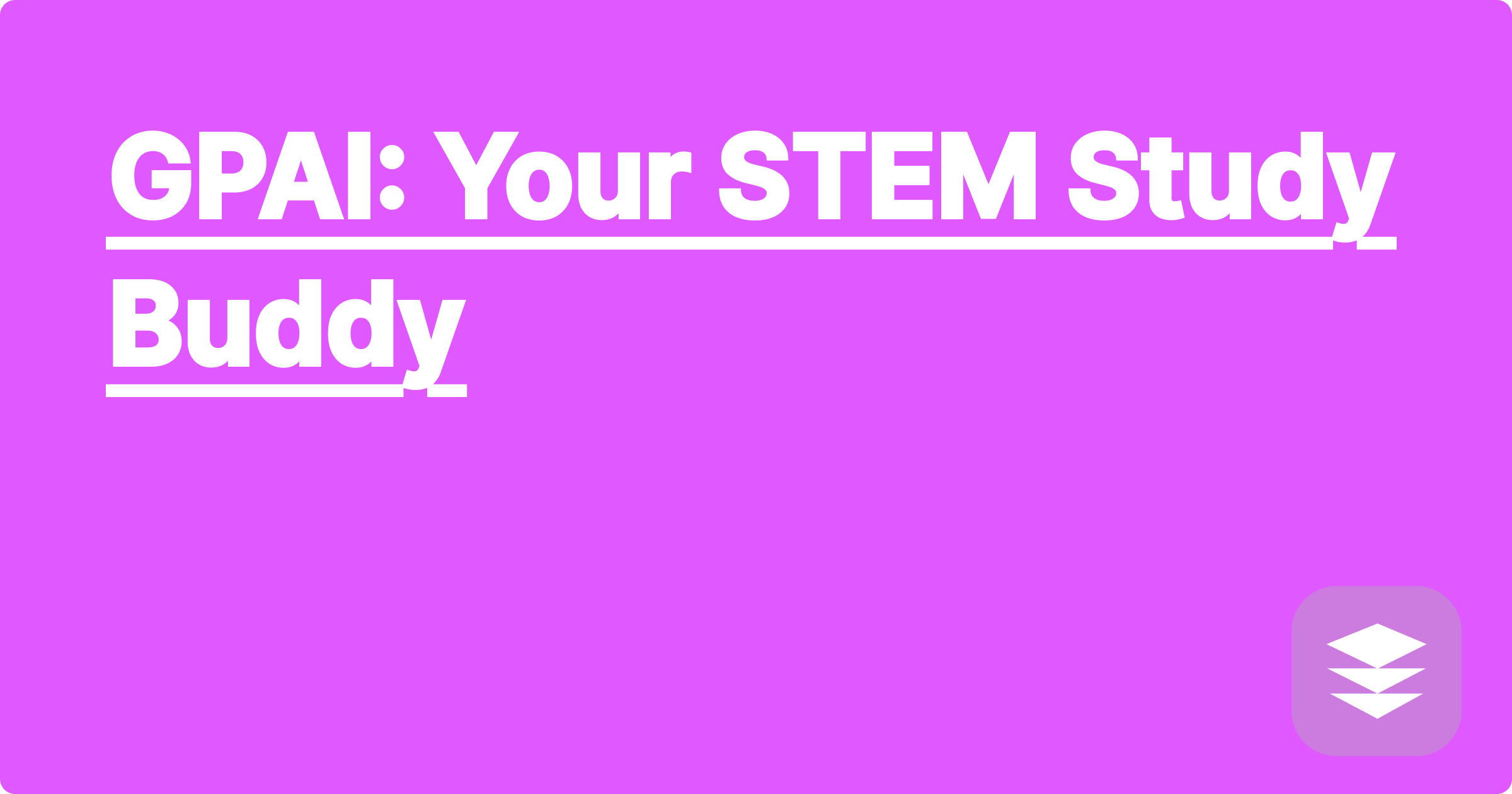
The world of STEM (Science, Technology, Engineering, and Mathematics) presents a unique set of challenges for students and researchers alike. The sheer volume of information, complex concepts, and the need for rigorous analytical thinking can often feel overwhelming. Fortunately, the rise of Generative Pre-trained Transformer (GPT) powered Artificial Intelligence (AI) offers a powerful set of tools to navigate these complexities. AI can act as a personalized study buddy, assisting with everything from understanding complex theories to generating practice problems and even brainstorming research ideas. This emerging technology has the potential to revolutionize how we approach STEM education and research, offering unprecedented opportunities for enhanced learning and discovery.
For STEM students, AI can provide personalized tutoring, helping them grasp difficult concepts at their own pace. Researchers can leverage AI to analyze large datasets, identify patterns, and generate hypotheses, accelerating the pace of scientific discovery. This shift towards AI-augmented learning and research is not just a trend; it's a fundamental change in how we approach knowledge acquisition and problem-solving within STEM fields. Embracing these tools is crucial for staying competitive and maximizing one's potential in these rapidly evolving disciplines.
STEM fields are characterized by their reliance on logical reasoning, quantitative analysis, and problem-solving skills. Students often struggle with applying theoretical knowledge to practical problems, connecting different concepts, and efficiently managing their learning process. Researchers face challenges in sifting through vast amounts of data, formulating testable hypotheses, and effectively communicating their findings. These challenges are further compounded by the rapid pace of advancements in STEM fields, making it crucial for students and researchers to continuously update their knowledge and skills. The traditional methods of learning and research, often relying heavily on rote memorization and manual data analysis, are becoming increasingly inadequate in this dynamic environment. A more efficient and personalized approach is needed to effectively navigate the complexities of STEM education and research.
AI-powered tools like ChatGPT, Claude, and Wolfram Alpha offer a promising solution to these challenges. ChatGPT and Claude excel at natural language processing, allowing them to explain complex concepts in a conversational and easy-to-understand manner. They can be used to generate practice problems, provide personalized feedback, and even assist with writing assignments. Wolfram Alpha, on the other hand, is a computational knowledge engine that can perform complex calculations, provide step-by-step solutions to mathematical problems, and offer insights into a wide range of scientific and technical topics. By integrating these tools into their workflow, STEM students and researchers can significantly enhance their learning and research capabilities.
Let's consider a student struggling with understanding the concept of derivatives in calculus. The student can start by asking ChatGPT or Claude to explain the concept in simpler terms, providing examples and analogies. Then, they can use Wolfram Alpha to visualize the derivative of different functions and explore how changes in the function affect its derivative. Next, they can ask ChatGPT to generate practice problems related to derivatives and receive feedback on their solutions. This iterative process of learning, practicing, and receiving feedback allows students to build a strong foundation in the concept. Researchers can use a similar approach to explore complex datasets. They can use Wolfram Alpha to perform statistical analysis and identify potential correlations. Then, they can use ChatGPT or Claude to brainstorm potential explanations for these correlations and formulate testable hypotheses.
Consider the formula for the derivative of a function f(x) = x^n, which is f'(x) = nx^(n-1). A student can use Wolfram Alpha to visualize this formula by plotting the function and its derivative for different values of n. This visual representation can help them understand the relationship between the function and its derivative. For example, if n=2, f(x) = x^2, and f'(x) = 2x. Plotting these two functions will visually demonstrate how the slope of the tangent line to the parabola (x^2) changes with x, which is represented by the linear function 2x. Researchers can use Wolfram Alpha to analyze complex datasets related to climate change, for example. They can input data on temperature, precipitation, and greenhouse gas emissions and use Wolfram Alpha to identify trends and correlations. They can then use ChatGPT or Claude to explore potential explanations for these correlations and develop predictive models.
To effectively leverage AI in STEM education and research, it's crucial to develop a strategic approach. Start by identifying specific areas where AI can be most beneficial. For example, if you struggle with understanding complex concepts, focus on using ChatGPT or Claude for explanations and examples. If you need help with calculations and data analysis, utilize Wolfram Alpha. It’s important to remember that AI tools are meant to augment, not replace, traditional learning and research methods. Use them as a supplement to your textbooks, lectures, and experiments. Actively engage with the information provided by AI tools, asking clarifying questions and exploring different perspectives. Finally, be mindful of the limitations of AI. While these tools are incredibly powerful, they are not infallible. Always double-check the information provided by AI and consult with your professors or mentors when needed.
To conclude, integrating AI tools into your STEM workflow can significantly enhance your learning and research capabilities. By understanding the strengths and limitations of these tools and developing a strategic approach to their implementation, you can unlock their full potential. Start exploring these tools today and discover how they can transform your STEM journey. Experiment with different AI platforms, identify those that best suit your learning style and research needs, and incorporate them into your daily routine. The future of STEM learning and research is here, and it's powered by AI. Embrace this technology and unlock a new level of understanding and discovery.
AI Robotics: Simulation & Design
Chemistry AI: Study & Practice
Bio AI Solver: Biology Problems